All Things Growth and Marketing
Mental Availability: The Most Underused Growth Lever in B2B
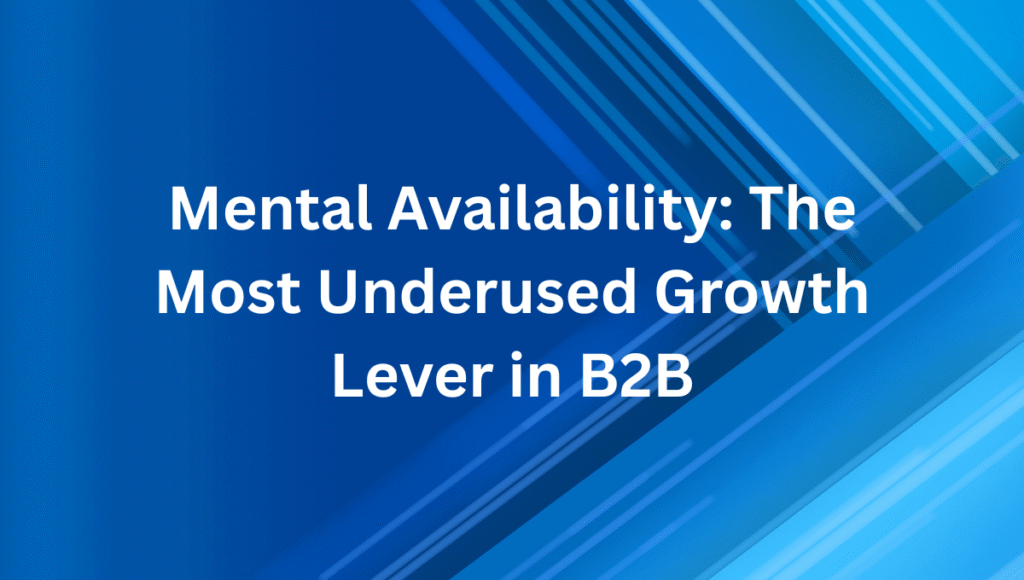
Most B2B marketing is forgettable, and it’s costing you millions.
Marketers obsess over ICPs, funnels, and optimization hacks, only to keep copying the same generic, templated campaigns from last quarter.
Researchers call it the “Dullness Pandemic.” Your board calls it wasted budget.
B2B growth doesn’t just come from performance clicks or last-touch attribution models. It comes from being remembered when it counts. And that means getting serious about mental availability, the most underused, underfunded growth lever in B2B marketing.
How to Win with AI-Driven Content Marketing: (AHREF’s recent study)
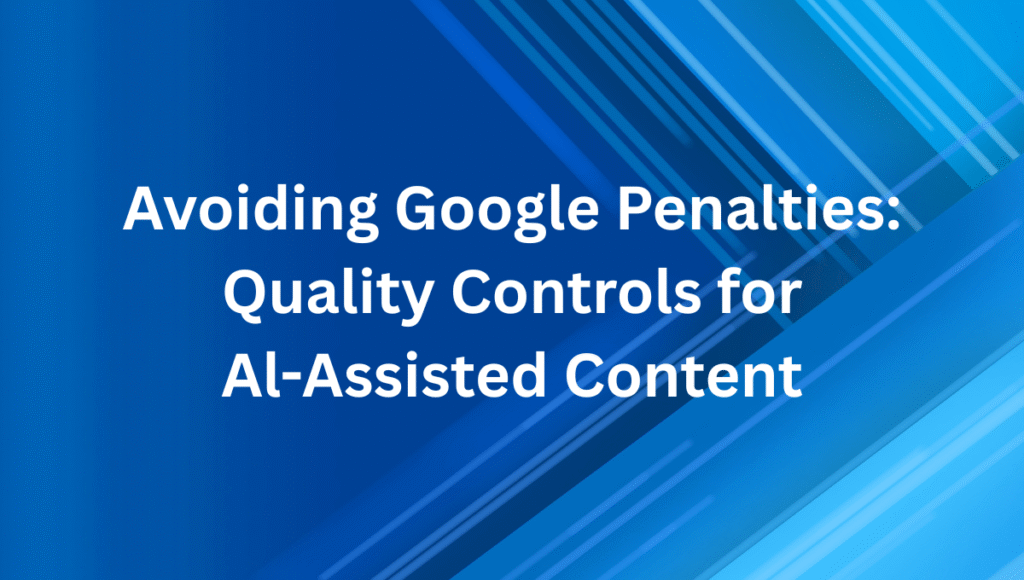
Everyone’s racing to publish more content, yet few are focused on making it matter.
Ahref’s surveyed 879 content and SEO professionals between December 2024 and February 2025 to reveal how top teams use AI to shift from volume to strategic impact.
Three‑Pillar Framework for B2B Marketing Attribution
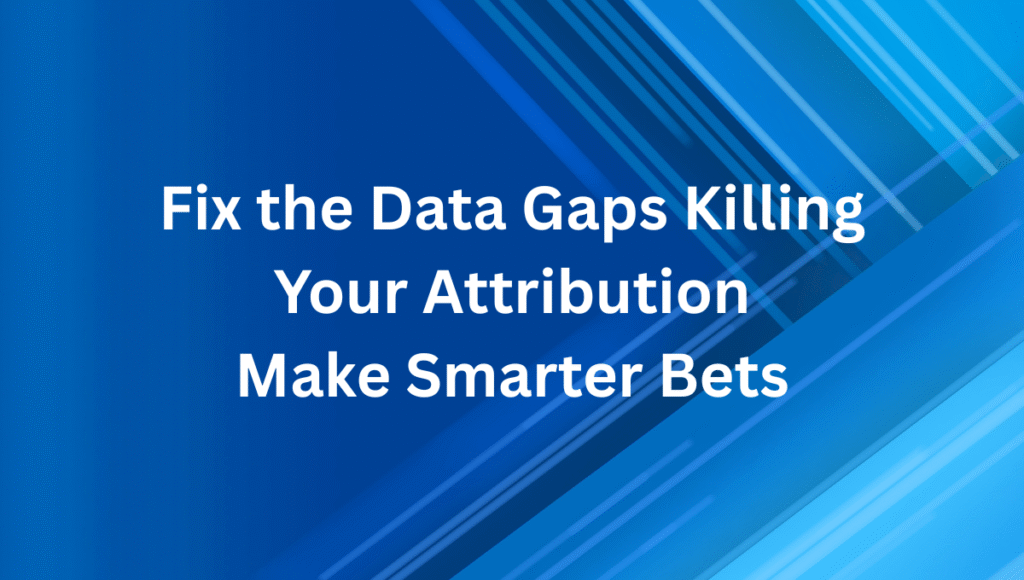
Imagine pouring thousands into LinkedIn ads, content syndication, and email blasts, only to find your ROI frozen at last‑touch attribution.
You know you’ve engaged prospects across multiple channels, yet your reports insist that a single click “closed” the deal. Frustrating, right?
How to Fix Your LinkedIn Demand Generation Strategy
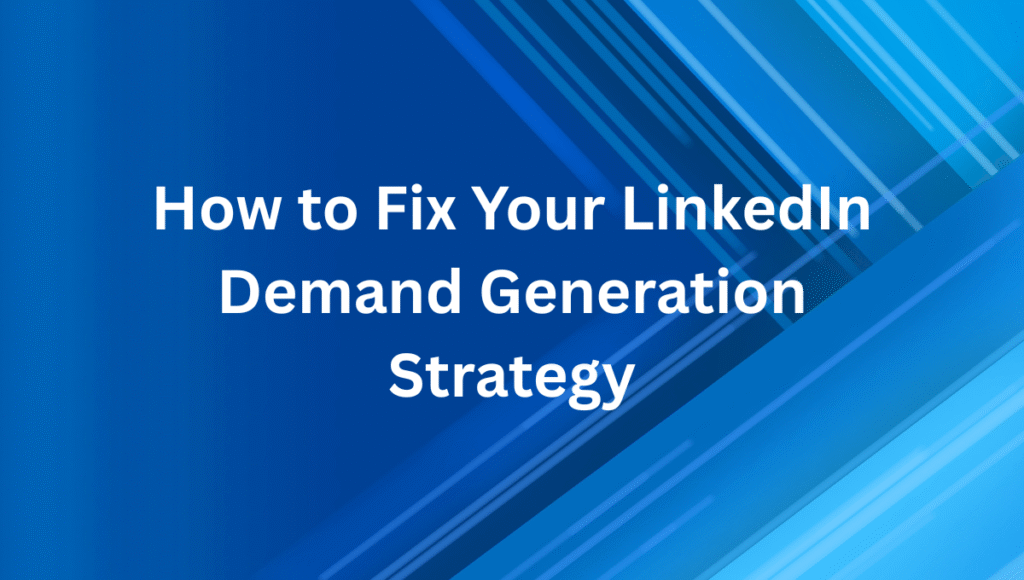
You’ve poured budget into Sponsored Content and polished your company page, yet your pipeline barely budges. Connection rates are low, reply rates even lower, and your ROI feels stuck in neutral.
The 3 Layers of Customer Pain That Drive Buying Decisions

Every marketer has heard the advice: “Speak to your customer’s pain points.” But too often, this guidance results in vague headlines, generic benefit statements, and copy that fails to connect.
Here’s the hard truth: your messaging probably isn’t failing because your product is bad. It’s failing because you’re addressing the wrong kind of pain.
How to Find the Best B2B Marketing Keywords for Your Business in the AI Era
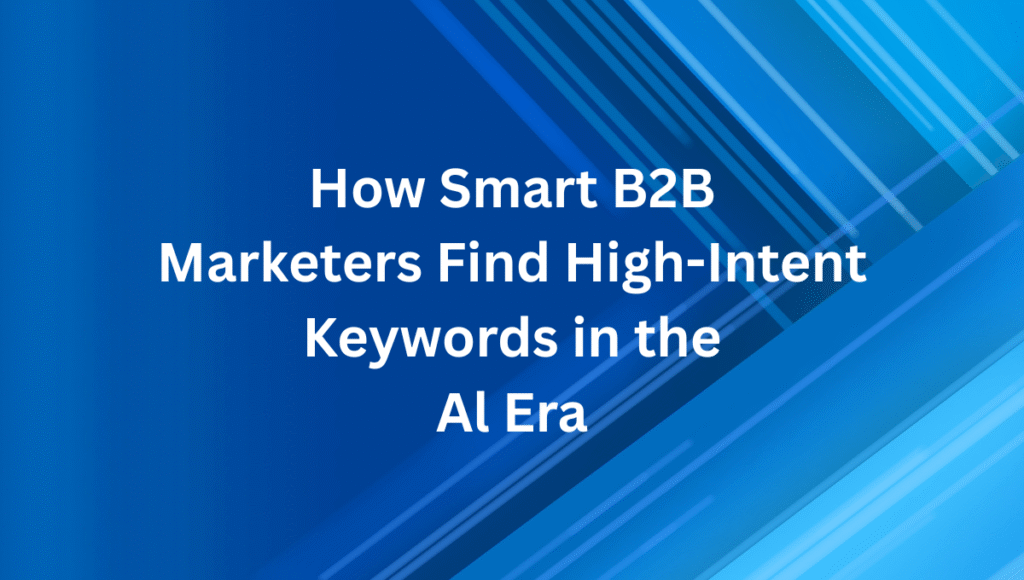
Your buyers are asking layered, high-stakes questions. If your content only scratches the surface, you’re out of the game.
AI-powered search has rewritten the rules. It’s no longer about volume. It’s about visibility in LLMs, depth of answers, and how well your content mirrors real buyer conversations.
Traditional keyword research focused on search volume and keyword difficulty. That was built for a Google-only world. That world is gone.
The Secret to B2B SEO: Build Authoritative Content with Your SMEs

In the era of AI search and information overload, SEO success no longer comes from simply optimizing keywords or creating listicles. It comes from credibility. And credibility is built with authoritative content rooted in subject matter expertise.
Building Brand Authority & Trust to Drive SEO Growth in the AI Era
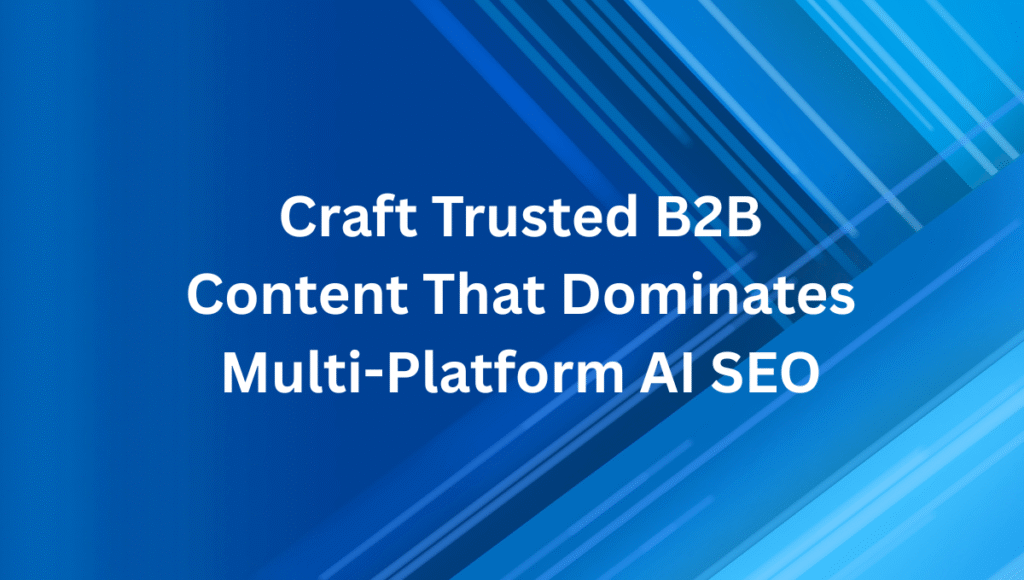
The landscape of B2B marketing and SEO is evolving rapidly. AI is reshaping how buyers search, evaluate, and find answers. Today, SEO is not just about keywords or links; it is about building genuine brand authority and growing brand awareness across multiple platforms.
Organic growth in the AI era: SEO isn’t dead, but it’s radically different
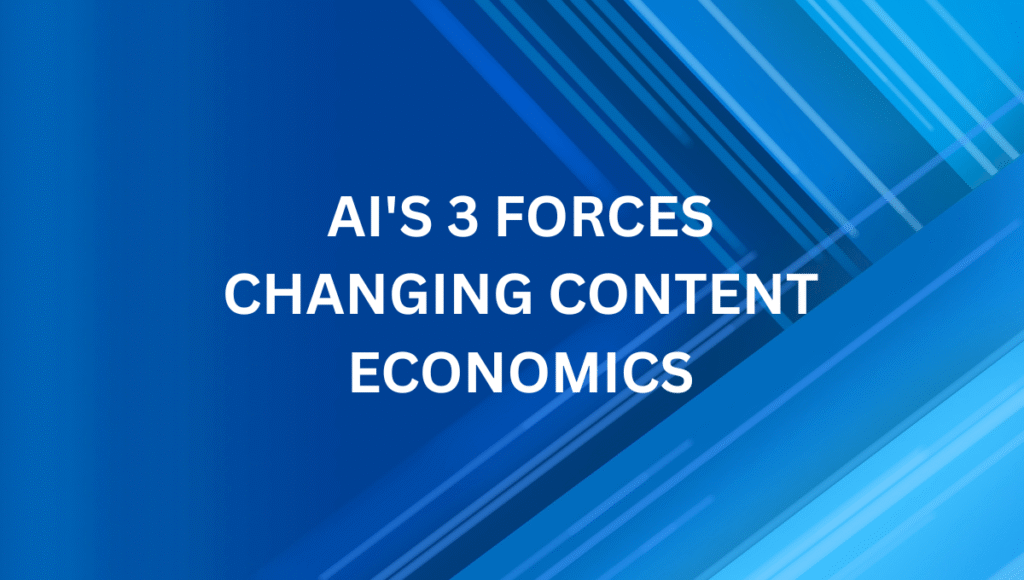
These insights come straight from our recent live course with Alex Birkett, co-founder of Omniscient Digital, where we tackled the hard truths and evolving tactics of organic marketing in the AI-driven landscape. Alex’s expertise brought clarity on how marketing teams need to pivot to remain visible and relevant, focusing on proprietary data, credibility, and strategic visibility beyond traditional SEO.
Keep reading
B2B Semantic SEO in the AI Era: Make Your Brand Unmissable
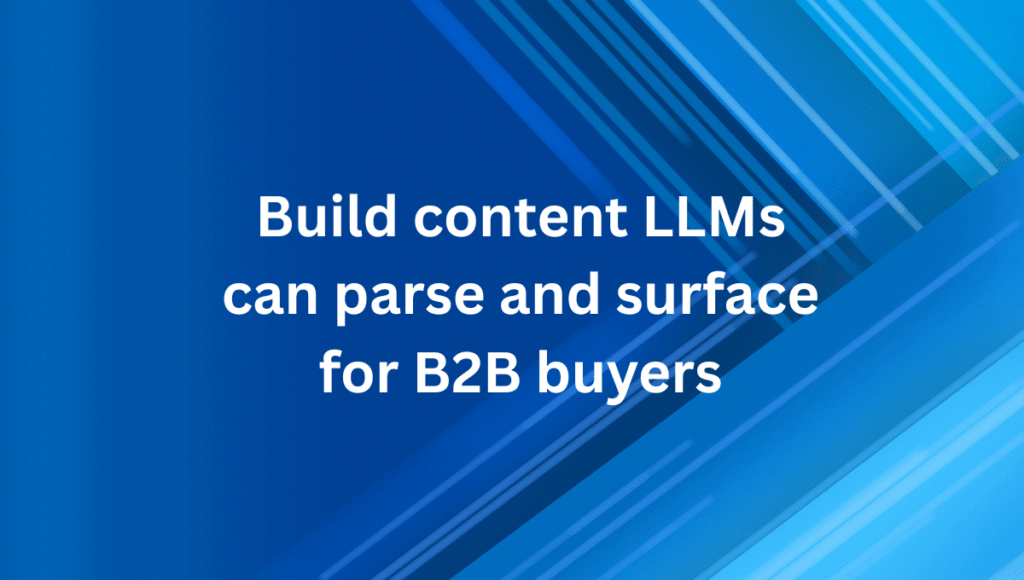
If you’re still tackling B2B SEO by shoehorning in target keywords and chasing backlinks, it’s time for a pivot.
Semantically rich content means structuring your pages around the way large language models (LLMs) interpret meaning, such as using clear entities, context signals, and logical hierarchies instead of just repeating phrases.
Keep reading
The B2B SEO Calendar Framework That Gets Results

In mid-2021, a niche publisher was grinding out two blog posts a week, staying “consistent” with content but getting nowhere in search. Traffic was flat. Conversions stagnant.
They rebuilt their workflow using data-driven topic scoring. Within a year, their traffic jumped from around 5,000 to 110,000 monthly organic visits—a 22× increase, without adding headcount.
If your own calendar still lives in scattered spreadsheets and Slack threads, you’re likely burning hours on content that won’t move the needle.
Keep reading
How B2B Content Marketing Drives Lead Generation Through Buyer Insights
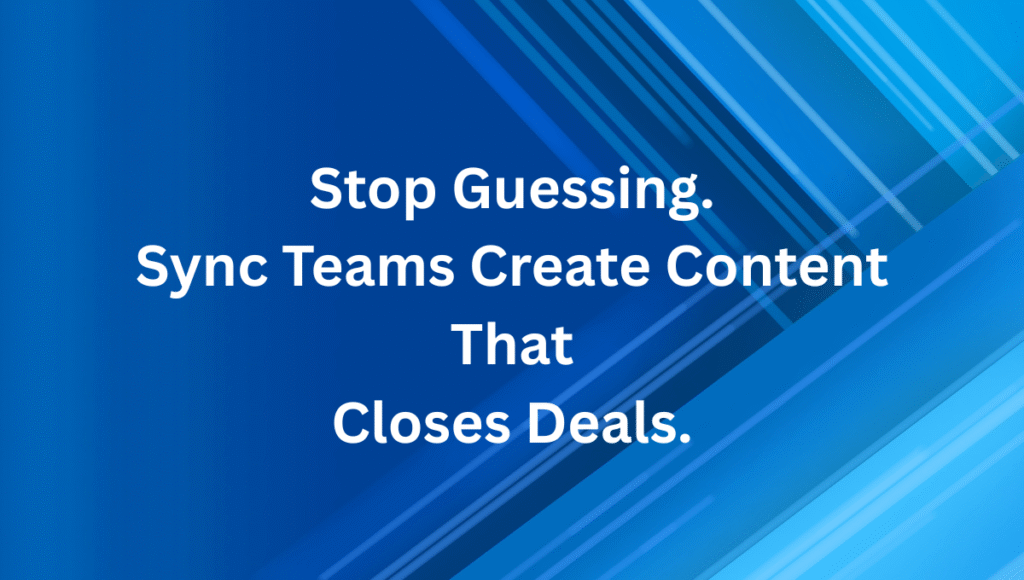
You’ve poured budget into personas, upgraded your Martech stack, and followed all the “best practices.”
Yet conversions stall, engagement flatlines, and Sales still asks, “Where’s the content that actually helps us close?”
The problem isn’t the volume of content, it’s the relevance.
Keep reading
Strategic B2B Teams Don’t Just Scale AI Content. They Multiply Impact
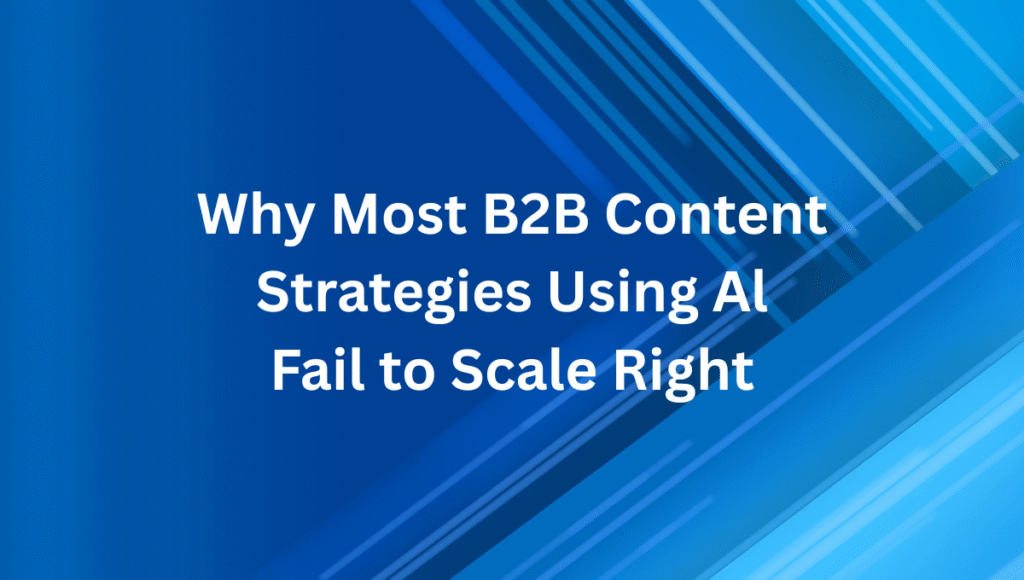
Most teams using AI for content are chasing volume over value. The result? A flood of generic content, no strategy, no edge, just noise.
The real risk isn’t AI itself. It’s using it to scale mediocrity instead of magnifying expertise.
Meanwhile, the winners are playing a different game. They use AI as a strategic supplement to human insight, not a content factory, but a smart assistant.
Keep reading
Using E-E-A-T When Scaling B2B Content with Programmatic SEO

You’ve seen it: endless SEO pages clogging search results, promising value and delivering fluff. Maybe you’ve shipped a few yourself. Scaling content is hard. But if Google doesn’t trust it, no one else will.
Tools can generate thousands of pages in minutes. That’s not the hard part. The challenge is scaling trust. Google’s E-E-A-T standards (Experience, Expertise, Authoritativeness, Trustworthiness) aren’t suggestions. They’re the gatekeepers.
Keep reading
Scale Bottom-of-the Funnel Content that Ranks & Drives Pipeline

Most B2B marketers chase traffic like it’s the end goal: blogs, webinars, social content, the whole top-of-funnel circus. You’ve got traffic. You’ve got leads.
But when the CFO asks where the revenue is, you’re scrambling for answers. That’s the problem: traffic doesn’t convert. Bottom-of-funnel (BOFU) content does.
And that’s where most teams fall flat. It’s costing you sales.
Keep reading
B2B SEO’s Secret Weapon: Content Gap Analysis Before Programmatic
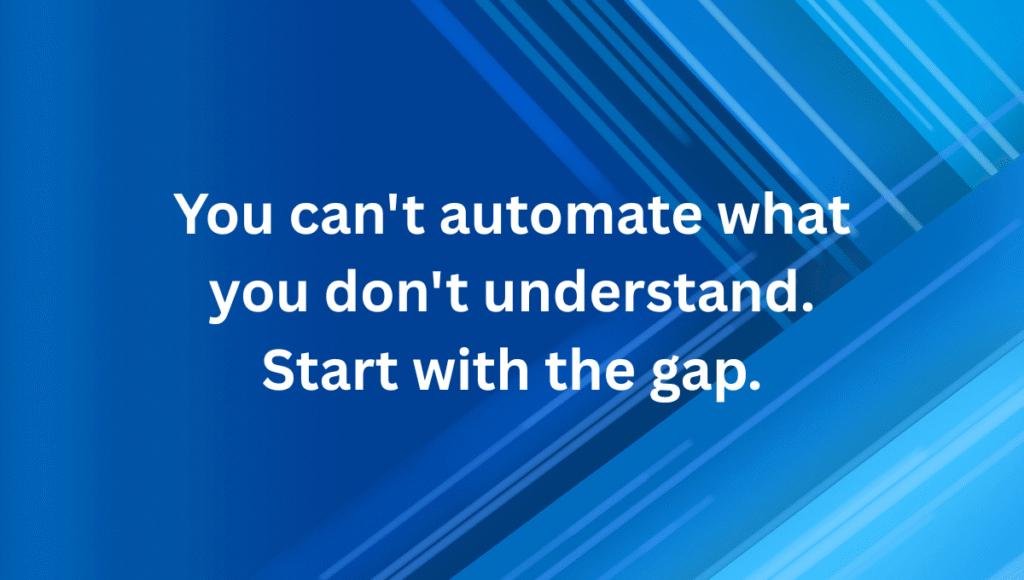
What if your competitors’ blind spots weren’t just oversights, but your B2B content engine’s unfair advantage?
While others flood the internet with shallow blog posts chasing vanity metrics, you zero in on overlooked search intent.
You reverse-engineer those gaps and deploy the SERPs with precise, scalable content that fills them fast.
You don’t outwrite them. You outsmart them.
This isn’t just content marketing. This is a traffic heist powered by a B2B programmatic SEO strategy (think: templatized, data-driven content at scale).
Keep reading
Sharpen Your B2B Value Proposition to Drive Conversions
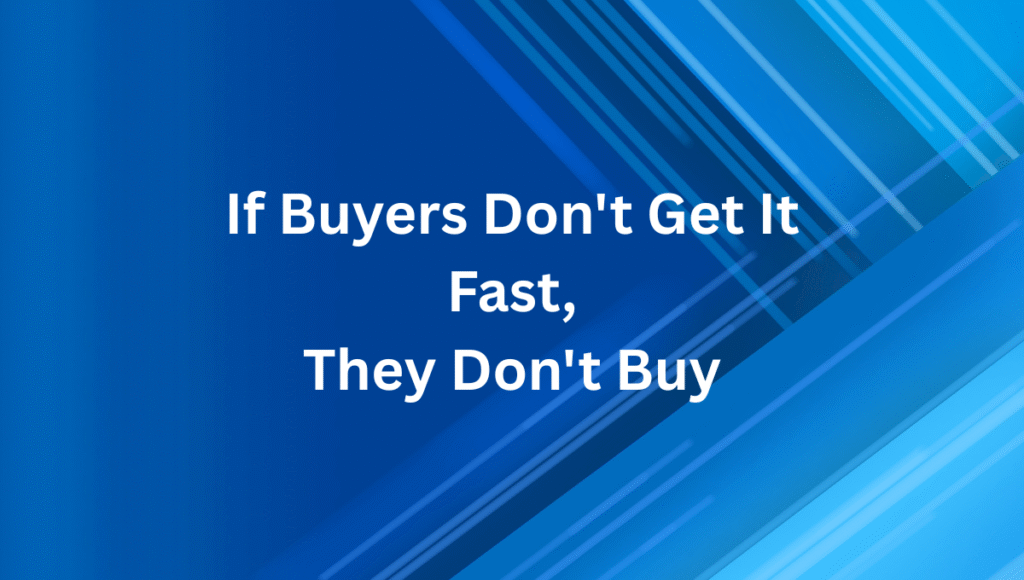
Mid-level marketing and sales managers face tighter budgets, smaller teams, and relentless noise. When your messaging blends in, buyers scroll past. Generic claims like “We help you collaborate better” feel interchangeable, and features are trivial to copy. Without clear differentiation, your funnel leaks at every stage: cold outreach is ignored, campaigns flop, and demos fizzle out.
Keep reading
Programmatic SEO Content Briefs: The Key to Content That Actually Ranks

You pour hours into content strategy, but the results stall. Most content briefs fall short because they’re little more than keyword dumps. With vague directions, writers are left guessing. The outcome? Missed intent, missed rankings, missed ROI.
If your briefs aren’t grounded in strategy, they’re just educated guesses. A stronger approach exists (it starts with programmatic SEO): a structured, data-backed system that turns briefs into ranking engines.
Keep reading
Scaling B2B SEO: Combine Topic Clusters with Programmatic Content That Ranks
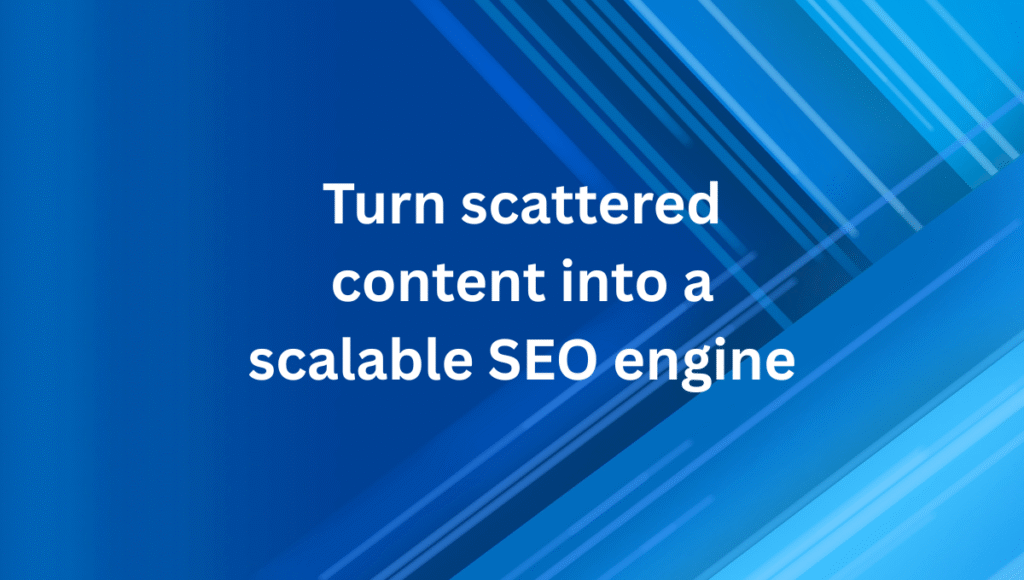
You don’t have a traffic problem. You have a structure problem. Publishing more won’t fix it. Your competitors rank higher with fewer pages because they build authority, while you’re still playing volume games. Google now rewards topic depth, not content sprawl. That’s why the smartest B2B SEO teams are combining topic clusters with programmatic SEO to dominate SERPs and scale without guesswork. Together, they help you align your content with what buyers are searching for and how Google evaluates relevance.
Keep reading
B2B Content Marketing Challenges Hurting SEO & Revenue
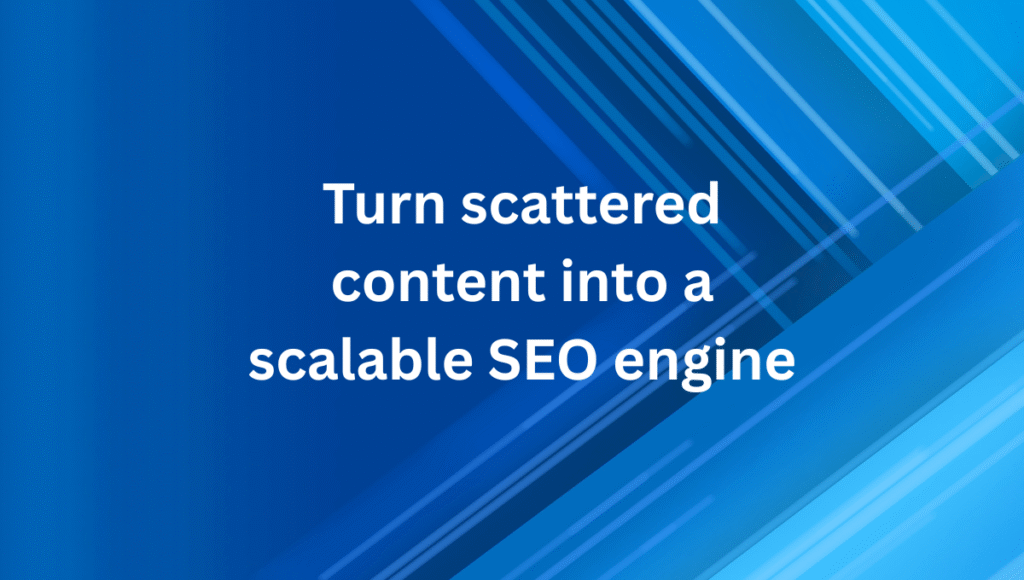
A lot of B2B companies are investing heavily in SEO but few are stopping to ask whether that investment is actually driving results. It’s worth taking a hard look: Why are we still prioritizing content that attracts traffic but rarely converts? Why are we chasing top-of-funnel visibility when buyers are already deep into research before, they engage? And how well do we really understand how B2B decisions get made today? On the surface, the content engine may look productive but underneath, it’s often failing to move the metrics that matter pipeline and revenue.
Keep reading
A B2B Long-Tail SEO Strategy: Your 12-Month Roadmap to Scalable Growth

Most B2B marketers chase volume. Smart ones chase intent. Long-tail SEO delivers 15% higher conversion rates and 3× ROI if executed with discipline. This 12-month roadmap is built for growth teams that want compounding, qualified traffic, not vanity metrics.
Keep reading
Answer Engine Optimization (AEO): The Comprehensive Guide for 2025
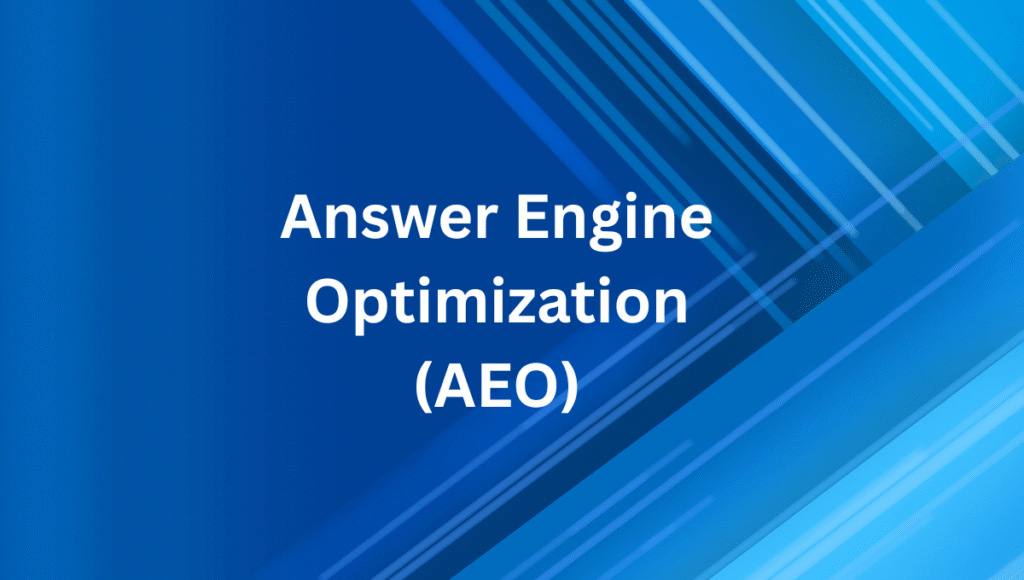
The search landscape is changing. Fast. If you’re still optimizing solely for traditional search engines, you’re missing a massive shift in how people find information online. Welcome to the era of Answer Engine Optimization (AEO) – where being the answer, not just a link in the results, is the new currency of digital visibility.
Keep reading
AI, Demand Creation, and the Rise of the B2B Content Moat

Most business-to-business (B2B) teams are still chasing the same high-volume keywords. Sure, traffic ticks up, but leads and pipeline? Stalled.
Search has shifted. AI-generated results are siphoning clicks, flooding search engine results pages (SERPs) with lookalike content. This is why building an SEO moat that drives true differentiation and lasting presence is a smarter long play.
So, if your B2B strategy is still anchored in capturing existing demand, it’s time to switch it up. Leading brands in 2025 aren’t waiting to be found, they’re shaping perception and sparking interest long before buyers even recognize what they’re looking for.
Keep reading
B2B Keyword Research: How Sales Call Insights Uncover High-Intent Keywords That Convert
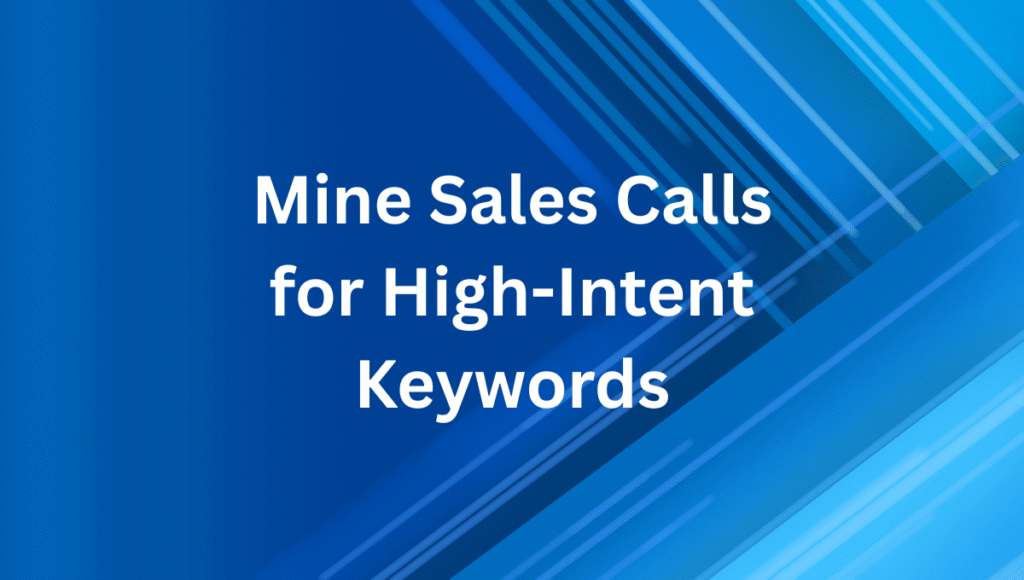
Tired of fighting over the same tired keywords? That’s the trap most B2B SaaS marketers fall into—relying on AHREFs or SEMRush to spit out high-volume terms like “CRM software.” Everyone’s doing it. Everyone’s creating the same generic content. And everyone’s stuck competing for scraps.
Keep reading
Navigating SEO Feasibility in Competitive B2B Niches
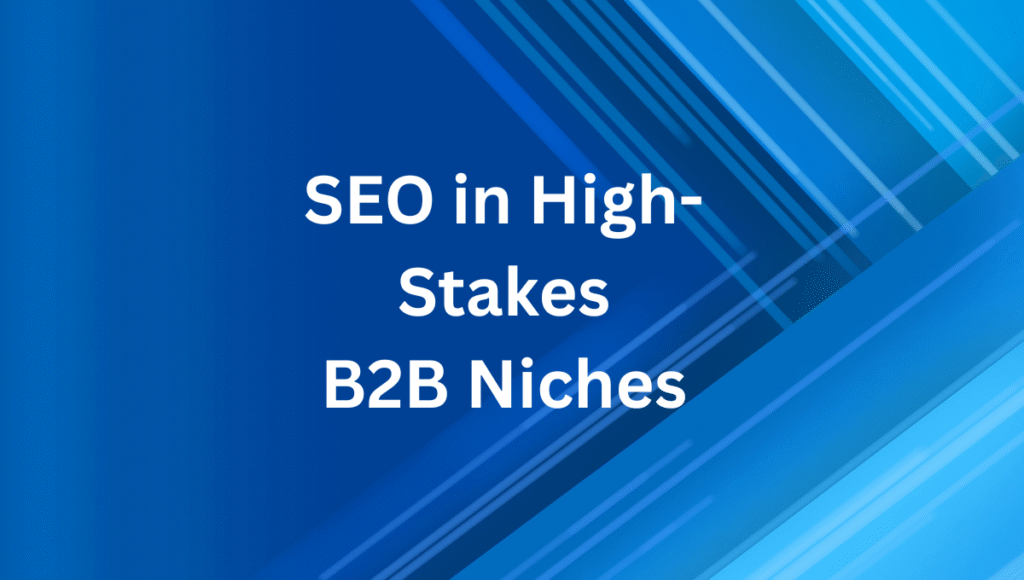
Most B2B companies waste resources on SEO that never converts. The biggest SEO mistake in B2B? Starting at the top of the funnel and working down. This approach wastes resources, delivers minimal conversions, and creates content that ranks but doesn’t drive business results.
Keep reading
Bottom of Funnel Content: B2B SEO Strategies That Actually Converts
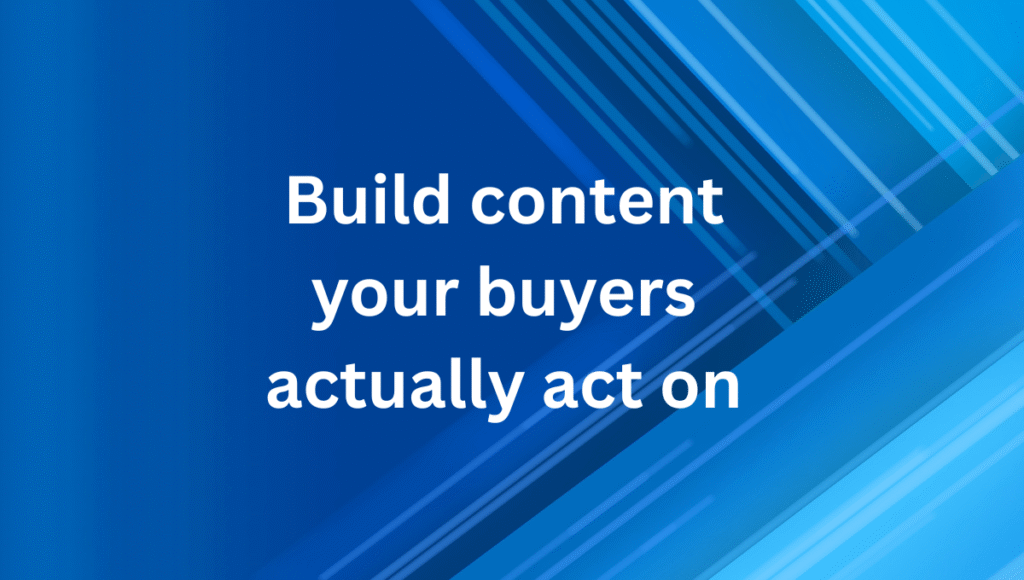
Most B2B SaaS teams are lighting cash on fire chasing SEO traffic that doesn’t convert. They obsess over ranking for high-volume informational keywords while ignoring the commercial-intent searches that actually drive revenue.
This article was inspired by CXL’s course on bottom-of-funnel SEO strategies in tough niches, which lays out a smarter approach for B2B teams that want to turn SEO into a revenue channel—not a vanity metric generator.
Keep reading
Build a Culture of Experimentation: Drive Growth and Innovation
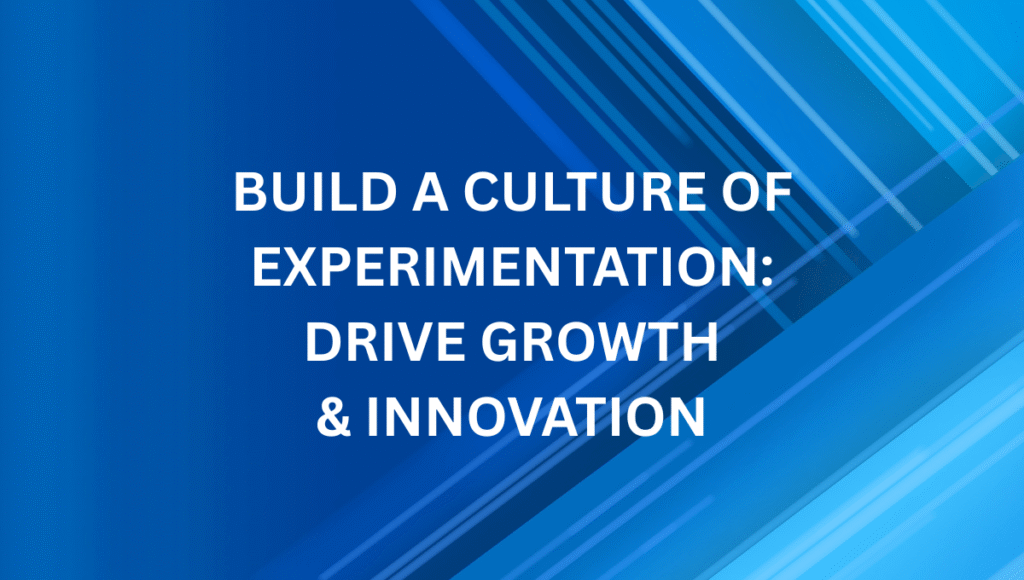
A lot of companies say they believe in experimentation. They run A/B tests, analyze data, and make incremental tweaks. But the uncomfortable truth is that most of them aren’t actually innovating.
Keep reading
13 Data-Driven LinkedIn Tactics for B2B Marketers & Founders
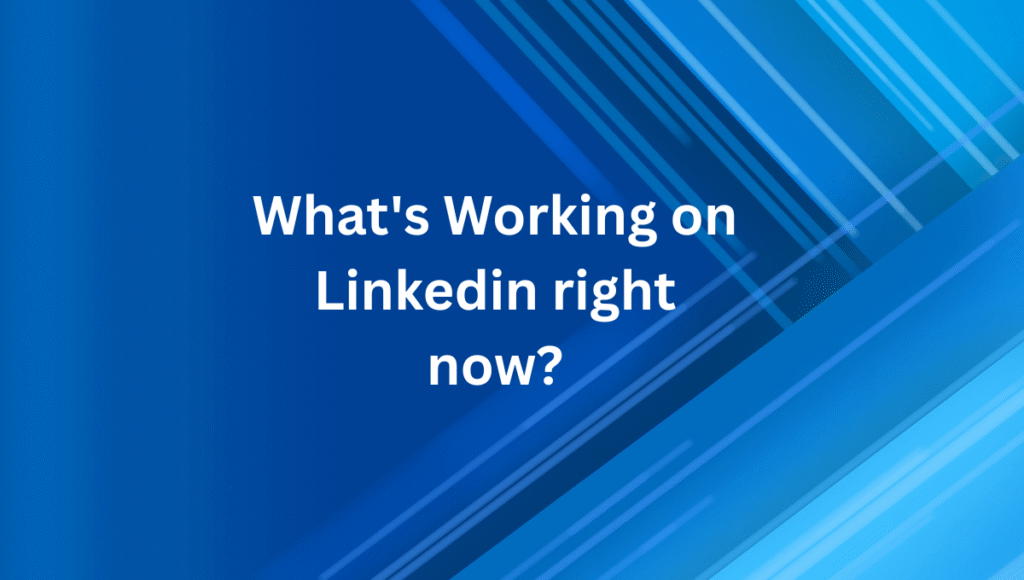
LinkedIn reach is declining for most B2B marketers, with median impressions down 13% between Q4 2024 and Q1 2025. But the top 1% of posts are breaking records.
Here’s what separates the winners from everyone else in 2025.
Keep reading
Account-Based Marketing: Transform Strategy into Revenue
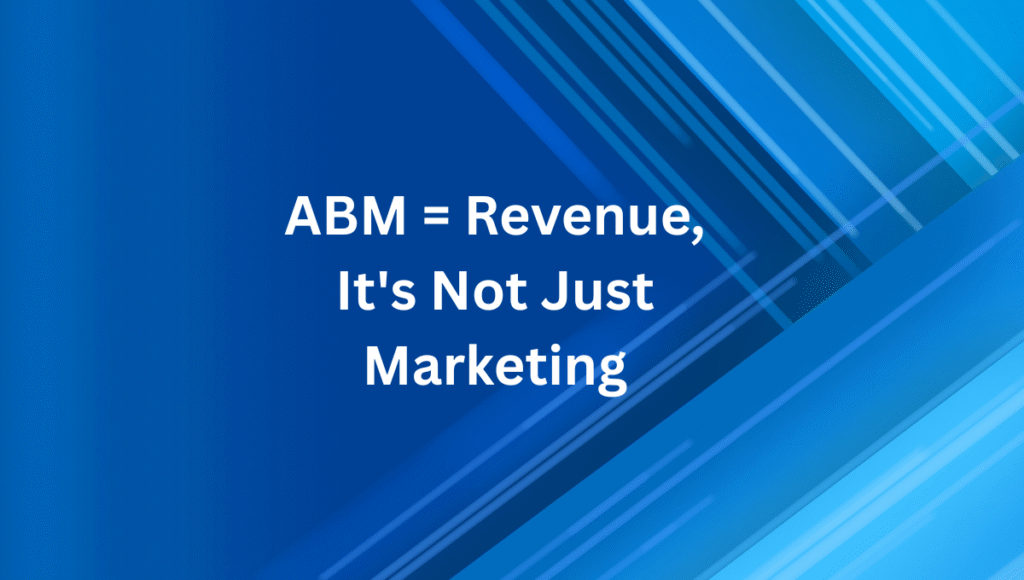
Account-based Marketing (ABM) isn’t just another marketing strategy—it’s a fundamental shift in how business-to-business (B2B) companies approach revenue generation. While 67% of marketers report using ABM in some capacity, the reality is that most are simply repackaging traditional demand generation tactics under a trendy label.
Keep reading
Why Unconferences Beat Traditional B2B Events Every Time
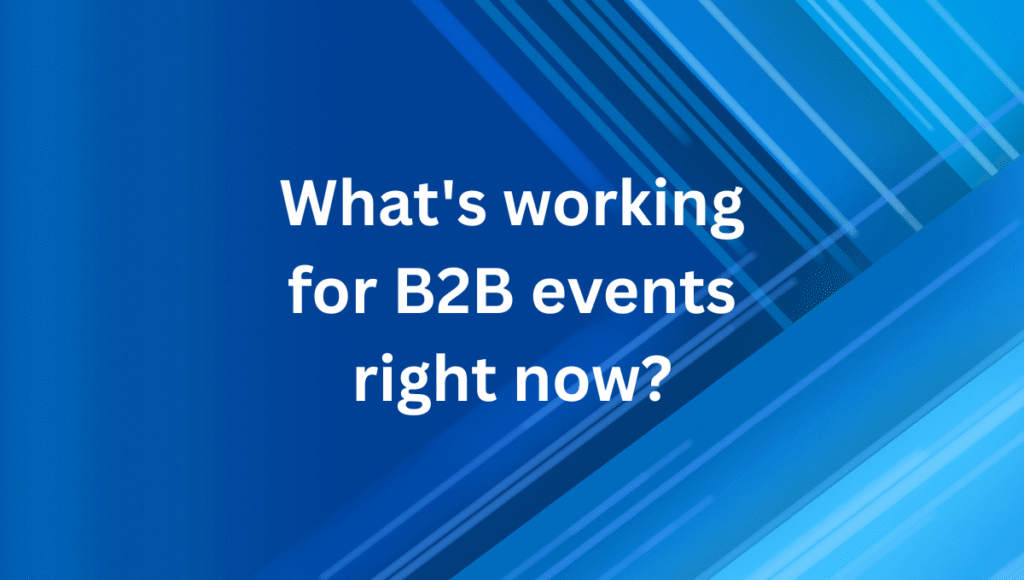
Traditional B2B events are fading. Here’s what works now.
Your attendees don’t want another PowerPoint presentation. They don’t want to sit quietly while someone famous talks at them for an hour. And they definitely don’t want to be hunted down by desperate salespeople in a convention center.
What they want is conversation, connection, and solutions to real problems.
Keep reading
Top digital marketing courses for marketing specialist
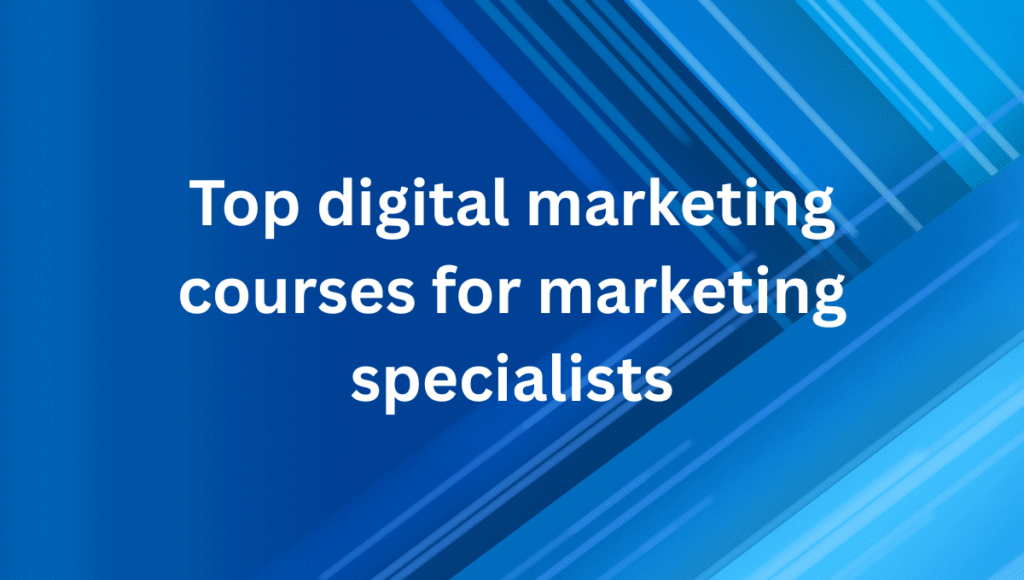
Digital marketing is no place for fluff or beginner-level platitudes. Advanced marketers need training that moves the needle – actionable strategies, real-world experiments, and proven results. Most “online marketing courses” bore you with basics. Not here.
Keep reading
Brand. Demand. Expand. The new B2B growth model on the block.

Yesterday, I saw this post from Megan at Refine Labs. As a brand-first marketer, it got me excited. We’re finally seeing more and more big names wake up to what’s been obvious, but underestimated all along: brand isn’t just “nice to have” – it’s the lever. The differentiator. The thing that makes the rest of your go-to-market work better.
I wholeheartedly agree with this framework, and that this is what works right now.
If you’re serious about sustainable growth, this is the lens you need.
So I figured it’s the perfect topic to write about today.
Keep reading
Top 10 Content Marketing & Content Strategy Courses for Advanced Marketers
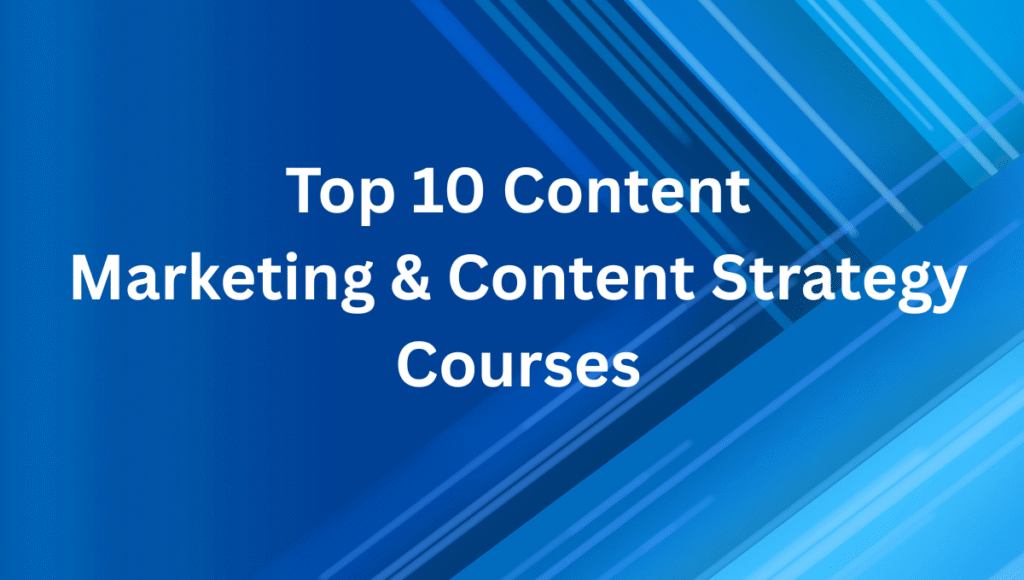
Content marketing education is often saturated with surface-level advice and theoretical frameworks that rarely produce meaningful results. Not these.
We’ve ranked the 10 best content marketing courses and content strategy courses for intermediate to advanced marketers based on:
- Certification value
- Industry reputation
- Real-world applicability
Keep reading
Tackling B2B Enterprise Content Marketing
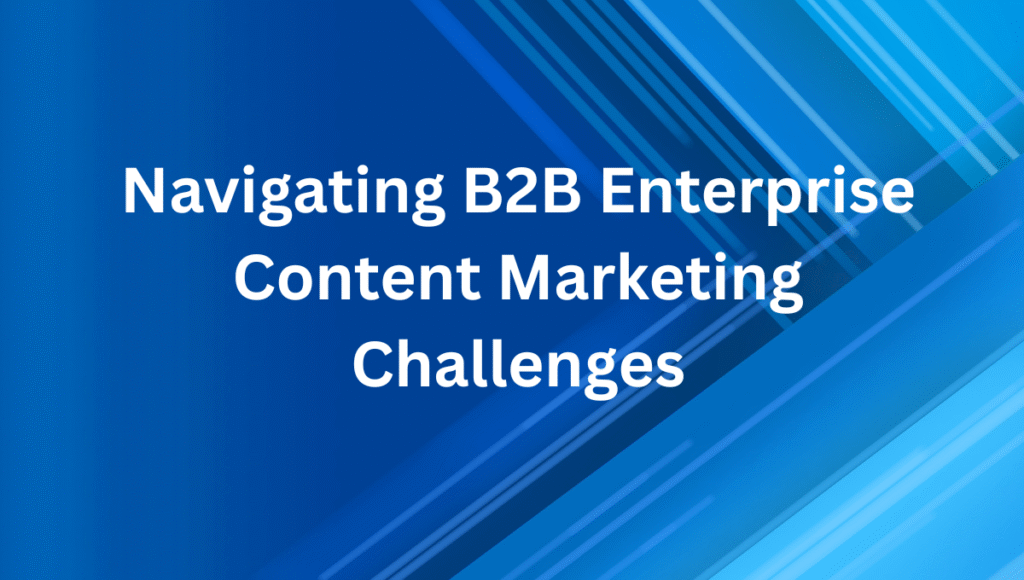
Most B2B enterprises waste thousands on content that never ranks, converts, or builds authority. You hire cheap writers, churn out mediocre blog posts, and wonder why results never come. The ROI isn’t there because your approach is fundamentally broken.
Keep reading
B2B Content Strategy: Differentiation is Your Secret Weapon
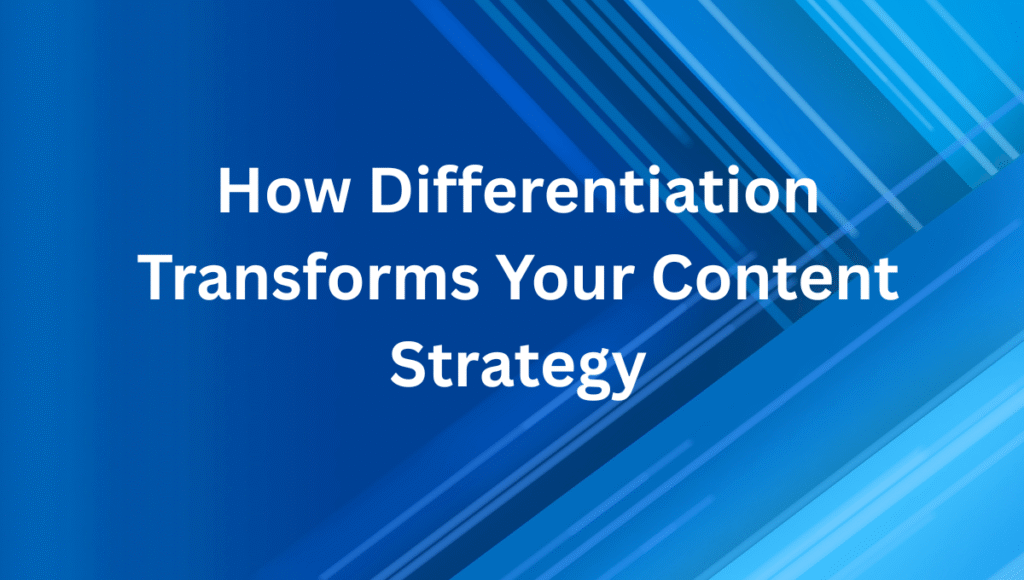
Generic blog posts don’t work anymore. Period. Most B2B content fails because it’s just text on a page. While your competitors waste resources churning out 2,000-word articles nobody reads, market leaders are creating sustainable competitive advantages through design, video, and user experience that drive measurable SEO results.
Keep reading
Scalable B2B Link Building: A Proven Framework for Growth
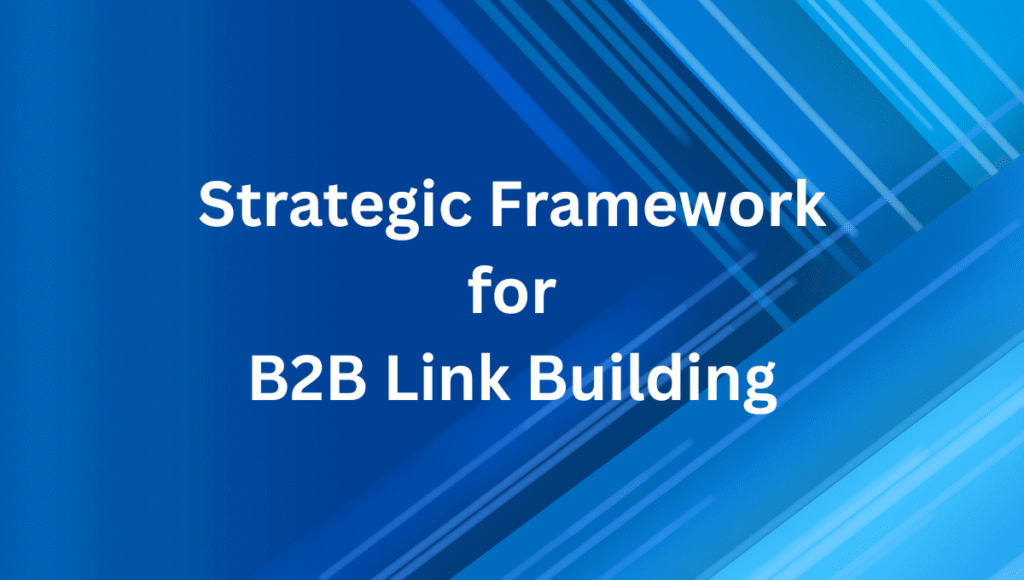
Most B2B companies waste time on link-building tactics that don’t work. Link-building isn’t optional for B2B companies that want organic growth. It’s the backbone of sustainable SEO. Yet according to Backlinko, pages ranking #1 in Google have 3.8x more backlinks than positions #2-#10, while only 27% of B2B companies have a documented link-building strategy.
Keep reading
Building a Kickass Growth Team: Everything You Need To Succeed
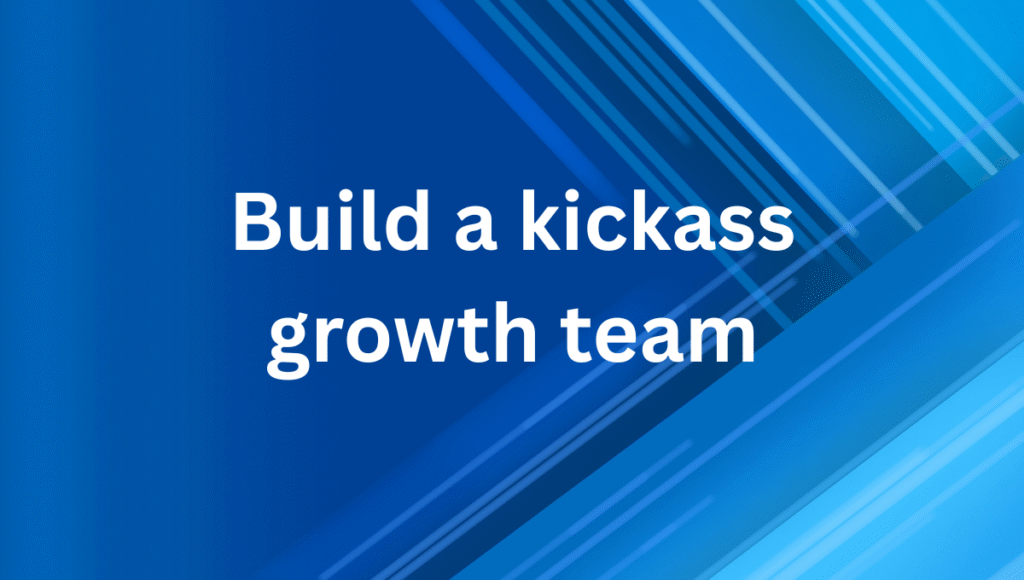
Growth doesn’t happen by accident; it’s engineered. And the best growth engines? They don’t start with tools or tactics. They start with the right growth team structure. Without the right structure, leadership, and accountability, your growth efforts stall before they ever get traction.
At the center of that structure is the growth team: a cross-functional group that brings together marketing, product, data, and engineering to run rapid experiments and accelerate scalable, sustainable growth.
This guide breaks down three growth team models, looking at where they work and where they fail, and provides a six-step process on how to build a growth team designed to move fast, learn fast, and drive business impact.
Keep reading
Half the budget, twice the slack – The brutal truth for B2B marketing leaders.
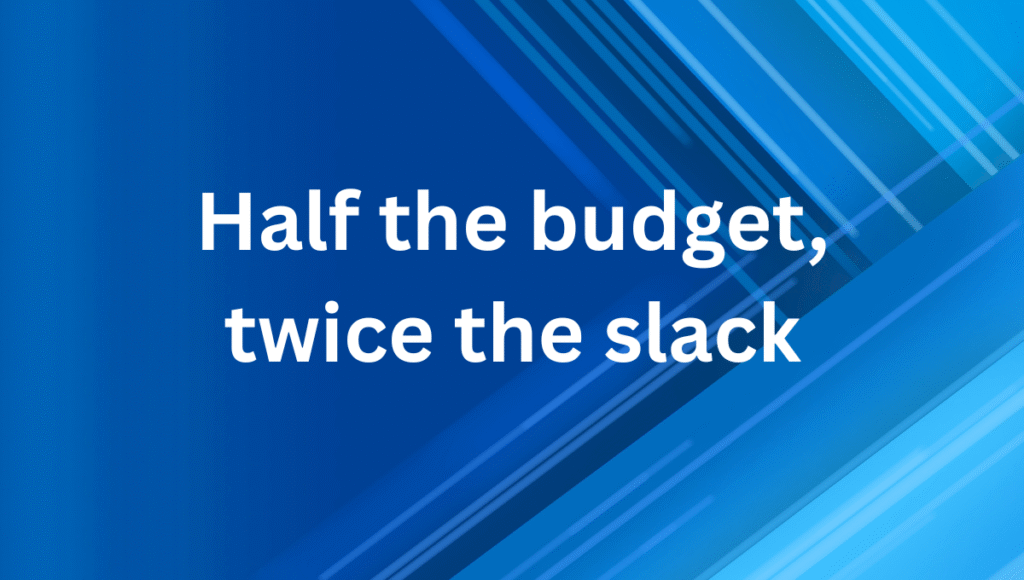
Half the budget. Twice the targets. Zero slack. Welcome to Q2 2025 in B2B marketing. If you’re a SaaS Marketing Director or Head of Marketing, you’re likely feeling the squeeze from all sides. Consider this your mirror – we’re about to lay out exactly what’s keeping you up at night, no sugar-coating.
Keep reading
Top Demand Generation Courses for B2B Marketers Actually Worth Your Time
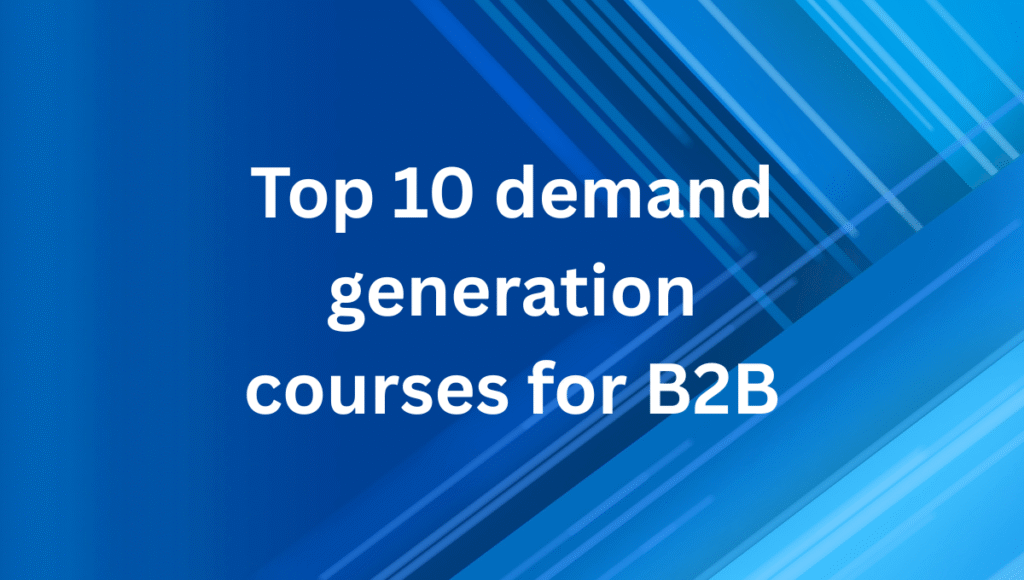
Marketing is flooded with empty talk about “more leads, more MQLs.” Most of it is smoke and mirrors, distracting B2B marketers from the only metric that matters: revenue.
Demand generation isn’t about chasing volume for its own sake; it wastes time, drains budgets, and leaves pipelines empty. It’s about building a predictable, sustainable revenue engine that drives real sales growth. And if your current stratgy isn’t consistently achieving this, it’s not working, and it’s time to level up.
So, if you’re tired of launching campaigns that get thousands of clicks but zero qualified meetings, this list is for you.
These are the top demand generation courses—no fluff, no recycled marketing 101. Just sharp, actionable training built for marketers who are serious about results.
Keep reading
B2B marketing skills that actually matter right now, and what salary they can get you.
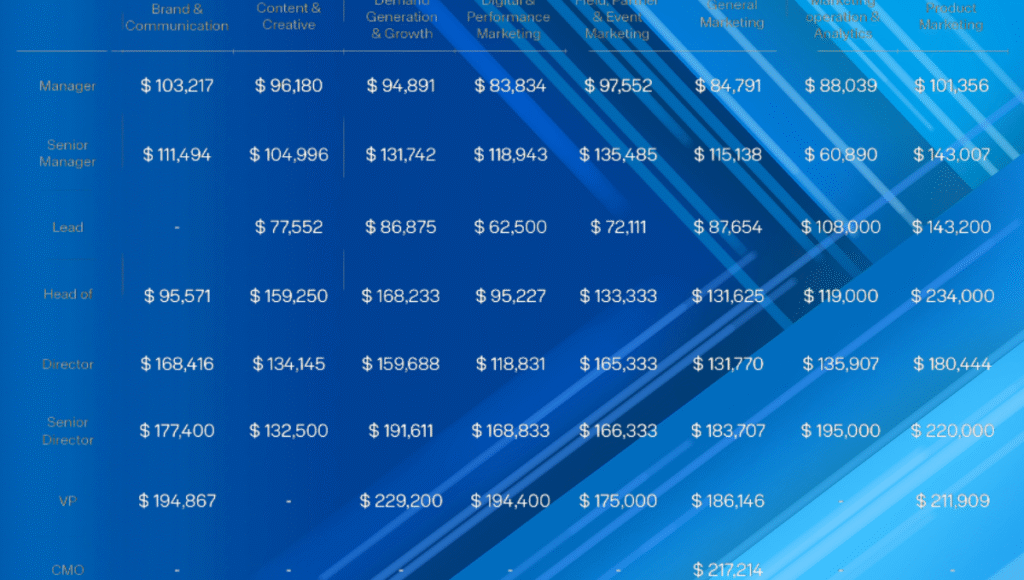
Earlier this week, our friends at Exit Five dropped a kickass B2B Marketing Salary Benchmark Report – deep, data-heavy, and seriously worth your time.
It breaks down what B2B marketers earn by role, region, and function.
While that landed, I went deep into the other side of the equation – what the market wants. I analyzed dozens of open senior SaaS marketing roles at companies people dream about working for, to map the in-demand skills by vertical.
We use these to help plan courses and content, but figured it fits nicely with the E5 report.
So let’s answer two questions that actually matter right now:
What skills are hot?
And what can they earn you?
Keep reading
Building a Kickass Growth Team: Everything You Need To Succeed
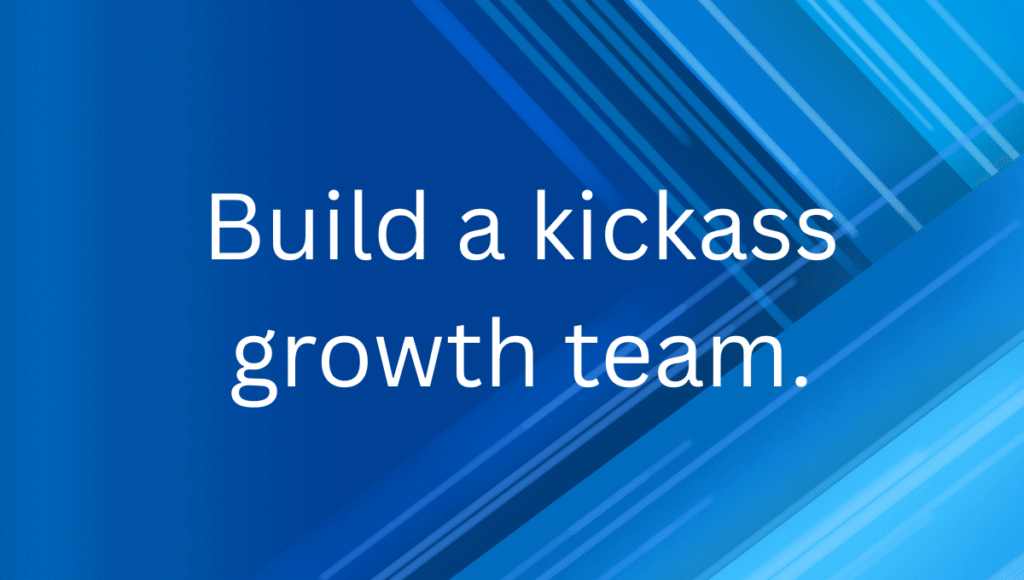
Growth doesn’t happen by accident; it’s engineered. And the best growth engines? They don’t start with tools or tactics. They start with the right growth team structure. Without the right structure, leadership, and accountability, your growth efforts stall before they ever get traction.
At the center of that structure is the growth team: a cross-functional group that brings together marketing, product, data, and engineering to run rapid experiments and accelerate scalable, sustainable growth.
This guide breaks down three growth team models, looking at where they work and where they fail, and provides a six-step process on how to build a growth team designed to move fast, learn fast, and drive business impact.
Keep reading
Half the budget, twice the slack – The brutal truth for B2B marketing leaders.

Half the budget. Twice the targets. Zero slack. Welcome to Q2 2025 in B2B marketing. If you’re a SaaS Marketing Director or Head of Marketing, you’re likely feeling the squeeze from all sides. Consider this your mirror – we’re about to lay out exactly what’s keeping you up at night, no sugar-coating.
Keep reading
Top Demand Generation Courses for B2B Marketers Actually Worth Your Time
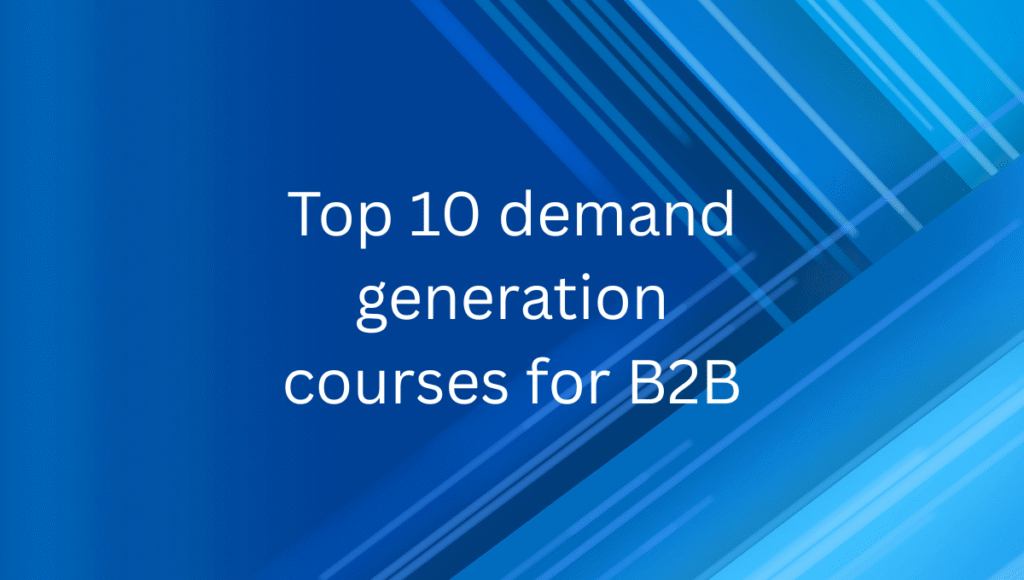
Marketing is flooded with empty talk about “more leads, more MQLs.” Most of it is smoke and mirrors, distracting B2B marketers from the only metric that matters: revenue.
Demand generation isn’t about chasing volume for its own sake; it wastes time, drains budgets, and leaves pipelines empty. It’s about building a predictable, sustainable revenue engine that drives real sales growth. And if your current strategy isn’t consistently achieving this, it’s not working, and it’s time to level up.
So, if you’re tired of launching campaigns that get thousands of clicks but zero qualified meetings, this list is for you.
These are the top demand generation courses—no fluff, no recycled marketing 101. Just sharp, actionable training built for marketers who are serious about results.
Keep reading
B2B marketing skills that actually matter right now, and what salary they can get you.

Earlier this week, our friends at Exit Five dropped a kickass B2B Marketing Salary Benchmark Report – deep, data-heavy, and seriously worth your time.
It breaks down what B2B marketers earn by role, region, and function.
While that landed, I went deep into the other side of the equation – what the market wants. I analyzed dozens of open senior SaaS marketing roles at companies people dream about working for, to map the in-demand skills by vertical.
We use these to help plan courses and content, but figured it fits nicely with the E5 report.
So let’s answer two questions that actually matter right now:
What skills are hot?
And what can they earn you?
Keep reading
Growth experiments vs optimization vs A/B testing: Stop confusing them
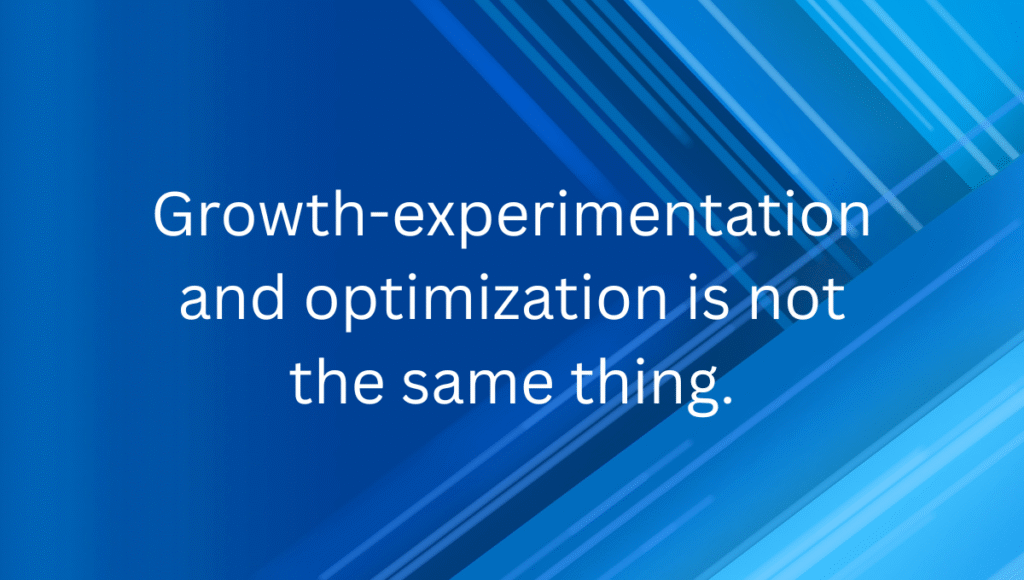
Growth experimentation and optimization is not the same thing. Many people get this wrong and confuse the two. Throw in A/B testing and people start running around like headless chicken. This isn’t just semantic nitpicking – using the wrong approach at the wrong time leads to invalid data, wasted effort, and missed growth opportunities.
This guide will clarify the critical differences between growth experiments, optimizations, and A/B tests – showing you exactly when and how to use each approach for maximum impact.
Keep reading
Pricing is one of the most overlooked B2B growth levers
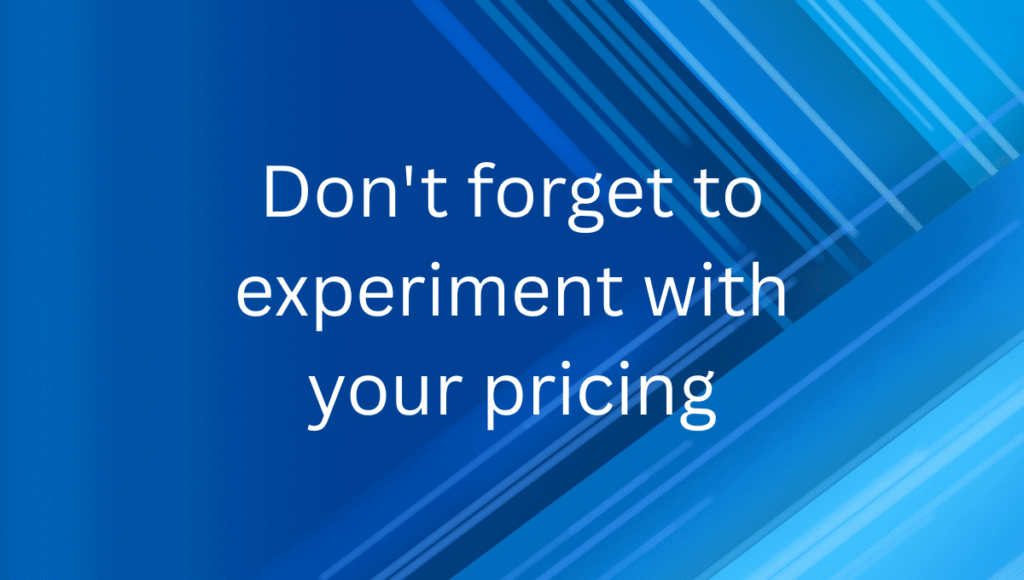
Pricing is often overlooked as a growth lever. When building growth strategies, teams typically focus on acquisition, retention, and engagement – rarely considering how pricing strategy can drive significant business growth.
In this comprehensive guide, we’ll explore how pricing fits into your growth model, uncover the many opportunities beyond simple price increases or decreases, and show you how to effectively evaluate pricing experiments as part of a complete growth strategy.
Keep reading
Experimentation-led GTM: The data-driven approach to B2B marketing and growth
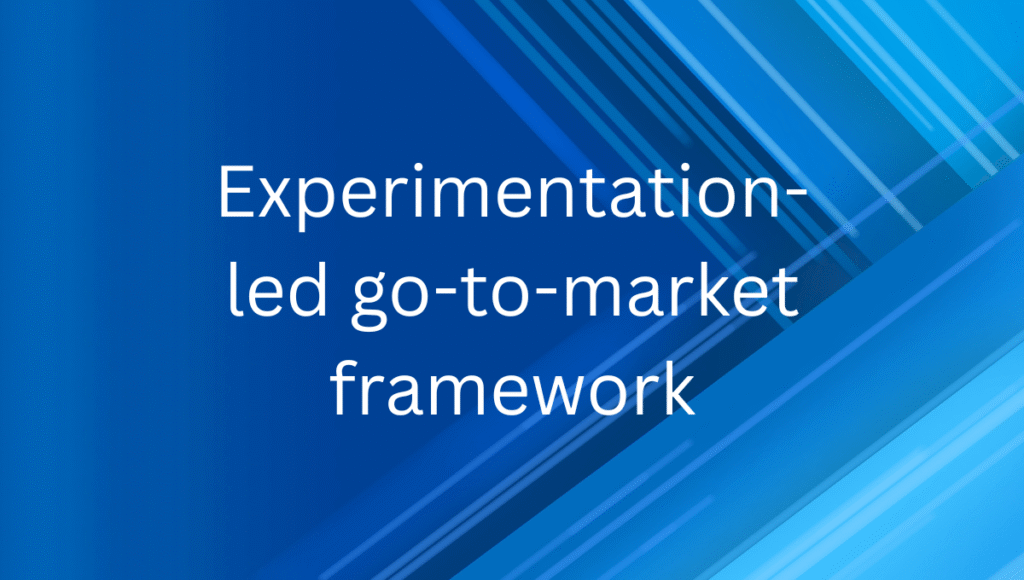
Traditional marketing fails because it’s built on assumptions rather than evidence. A staggering 95% of product launches fail within their first year. The solution? Stop guessing and start testing.
B2B companies that adopt experimentation-led go-to-market (GTM) strategies gain a competitive edge by systematically testing hypotheses, measuring outcomes, and scaling what works. This data-driven approach removes subjective decision-making from marketing and focuses entirely on results.
This guide breaks down the framework for implementing an experimentation-led GTM strategy that delivers measurable results for B2B companies. Learn how to identify your ideal market segment, collect the right data, build effective lead generation systems, and create a growth engine that consistently delivers qualified leads.
Keep reading
The scientific approach to linkedin ads: a B2B marketer’s experimentation guide
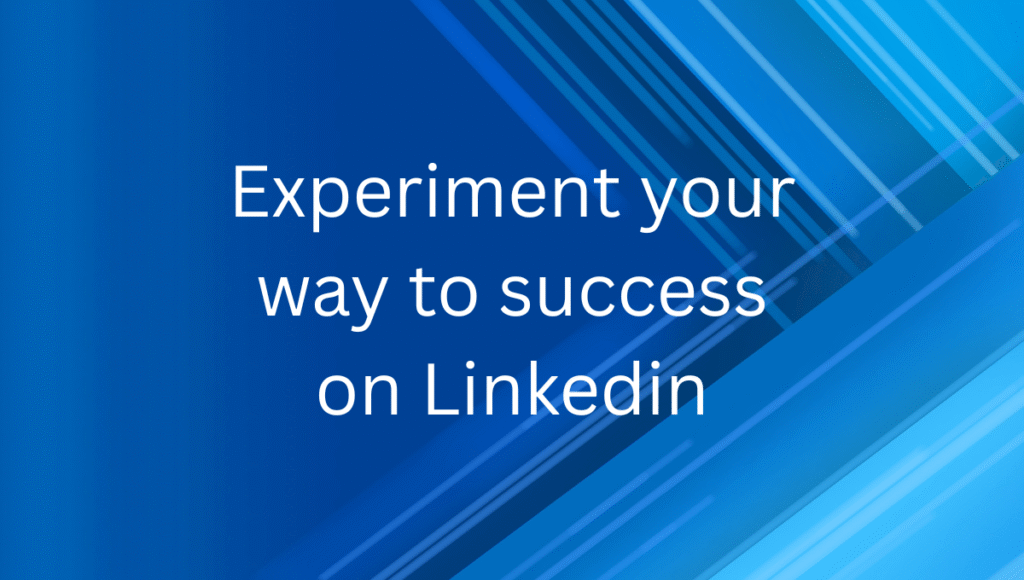
Marketers struggle to see the ROI they want from LinkedIn. They follow generic best practices, trust platform defaults, and wonder why results suck.
Success doesn’t come from copying others. It comes from testing what works for your specific business.
Rob Muldoon, who taught this LinkedIn experimentation framework at CXL, puts it bluntly: “The advertisers who do things slightly different or have used experimentation to get the edge on LinkedIn are the ones that are the most successful.”
This guide will show you how to build a systematic testing approach that delivers actual business results, not just vanity metrics.
Keep reading
Prove your B2B SEO ROI with a data-driven framework
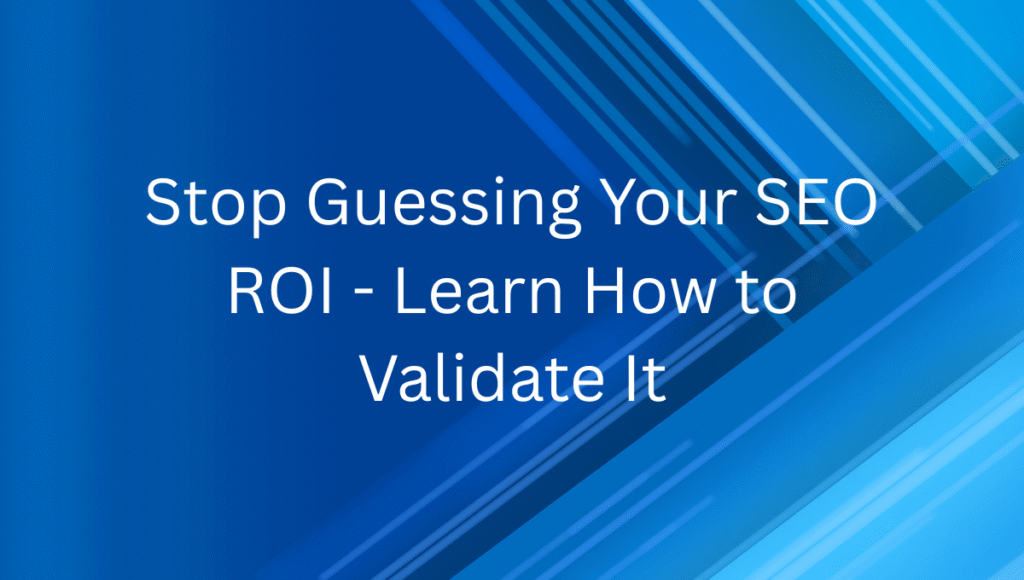
Most B2B companies abandon SEO before it has a chance to work. They invest for 2-3 months, see minimal results, and pull the plug—wasting resources and missing massive long-term opportunities.
The problem isn’t that SEO doesn’t work for B2B. It’s that most companies lack a proper framework for validating ROI and identifying early success signals. Without these, they make decisions based on gut feelings rather than data.
Keep reading
How to Fix a B2B SEO Content Strategy That’s Not Converting
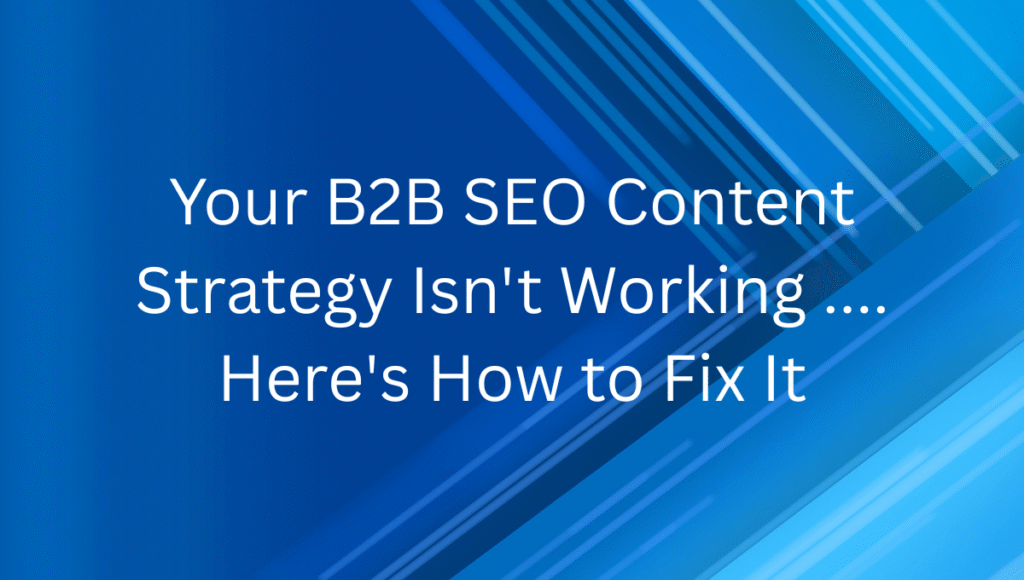
Most B2B marketers are wasting 60% of their content budget because their strategies fail to deliver measurable results. Marketers can’t distinguish between brand-building content and SEO-driven assets.
Keep reading
All-bound Marketing: The Smart Marketer’s Approach to B2B Growth

Traditional B2B marketing approaches often fail because they’re too siloed. Companies run ads without content support, create content without distribution strategy, or attempt outbound without proper targeting. The result? Wasted budget and missed opportunities.
All-bound marketing solves this problem by integrating multiple marketing channels into a cohesive system that generates qualified leads more efficiently. This approach combines the best of inbound, outbound, and content marketing to create a comprehensive growth engine.
Keep reading
The B2B Buying Journey: What Marketing Leaders Need to Know in 2025

The B2B buying process has evolved dramatically. Today’s buyers are more informed, more selective, and more independent than ever before. Recent research from Wynter reveals exactly how B2B SaaS marketing leaders make purchasing decisions in 2025.
This comprehensive study of 100 B2B SaaS marketing executives from companies with 200+ employees uncovers the critical touchpoints, decision factors, and stakeholder dynamics that shape modern B2B purchases.
Let’s dive into what really matters in the B2B buying journey and how you can position your company for success.
All-bound marketing solves this problem by integrating multiple marketing channels into a cohesive system that generates qualified leads more efficiently. This approach combines the best of inbound, outbound, and content marketing to create a comprehensive growth engine.
Keep reading
How to write B2B emails that actually get read, clicked, and drive revenue

Most B2B email copy is boring and soul-numbing. Corporate jargon, feature lists, and “we’re excited to announce” nonsense that nobody cares about. No wonder open rates hover at 20% and click rates at a pathetic 2-3%.
The truth? Writing emails that convert isn’t complicated. It’s ruthlessly focusing on what works and cutting everything else.
According to Experian, targeted emails generate 58% of all revenue yet 89% of marketers still send the same content to their entire list. The gap between mediocre and exceptional isn’t knowledge – it’s execution.
The truth? Writing emails that convert isn’t complicated. It’s ruthlessly focusing on what works and cutting everything else.
According to Experian, targeted emails generate 58% of all revenue yet 89% of marketers still send the same content to their entire list. The gap between mediocre and exceptional isn’t knowledge – it’s execution.
Keep reading
The B2B Email Marketing Playbook: Data-Driven Strategies That Actually Drive Growth

Email marketing remains one of the highest-performing B2B growth channels, delivering $36 for every $1 spent and vastly outperforming social media and paid ads in ROI. Yet most companies get it catastrophically wrong. They blast generic messages to uninterested prospects and wonder why results tank.
The difference between average and high-performing B2B email marketing comes down to consistency, not complexity. It’s disciplined execution across four pillars: permission, deliverability, content, and design.
McKinsey found email is 40x more effective at acquiring customers than Facebook and X combined. And for B2B specifically, 59% of executives say it’s their preferred communication channel. The takeaway is clear: when done right, email drives serious business outcomes.
Keep reading
How to Use Content Layering to Grow B2B Product Rankings

Your product pages aren’t ranking because you’re approaching content strategy backward. Most companies obsess over optimizing product pages directly while completely ignoring the content ecosystem that actually drives rankings.
Keep reading
The human element: Why subject matter experts are the key to B2B demand generation

B2B marketing has a problem. We’re obsessed with tools, platforms, and automation while ignoring the most powerful asset we have: our experts.
Your subject matter experts (SMEs) are the difference between content that gets ignored and content that builds trust. Yet most companies waste this advantage by letting junior staff create their demand gen content.
Let’s fix that.
Keep reading
B2B demand generation: Why traditional funnels are dead

B2B marketing has a problem. We’re stuck in the past, optimizing for metrics that don’t matter while our prospects have moved on.
The traditional B2B funnel is broken. You know the one – gated content leading to MQLs, followed by nurture emails and sales outreach. This approach assumes that downloading an ebook signals buying intent. It doesn’t.
Most marketing teams have optimized for marketing qualified leads (MQLs) for years, believing that contact information left behind for a white paper or infographic indicates genuine interest in their product or service. This false assumption has led to wasted resources, frustrated sales teams, and missed revenue opportunities.
Let’s kill this outdated model and replace it with something that actually works.
Keep reading
Top 10 ABM Courses That Actually Deliver ROI (and Which Ones Waste Your Time)

Most Account-Based Marketing (ABM) courses fail. Despite 94% of B2B marketing teams running ABM programs in 2020, only 22% were deemed successful as of 2023. Four out of five programs crash because ABM isn’t just another tactic—it’s organizational change. It demands sales and marketing alignment, dedicated resources, clear measurement frameworks, and smart targeting. But how do you achieve this?
We’ve analyzed today’s top ABM courses not by their marketing claims, but by one simple test: Would this actually help me launch a live, revenue-generating ABM program?
Here’s what’s worth your time and money.
Keep reading
Prioritizing B2B Content with KOB Analysis

Most B2B content strategies fail because they’re built on hope, not data. Recent industry research reveals that nearly 60% of B2B marketers consider their content strategy only “moderately effective” at best. When surveyed about the primary challenges, almost half pointed to a lack of clear goals and measurable objectives.
Keep reading
Time-Based SEO Testing – Insights from Tipalti & Koala

Your SEO strategy is probably failing. Not because you’re not working hard enough, but because you’re working on the wrong things.
Most companies spend months creating content, optimizing pages, and building links without knowing if any of it actually works. They implement random tactics based on “best practices” from 2018 and hope Google rewards them eventually. This is madness.